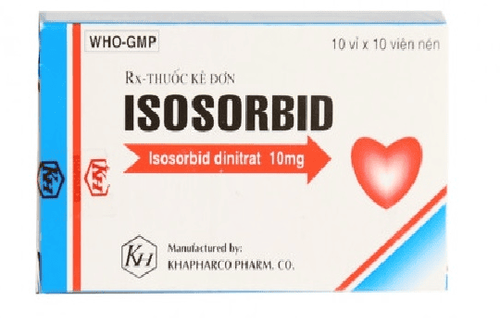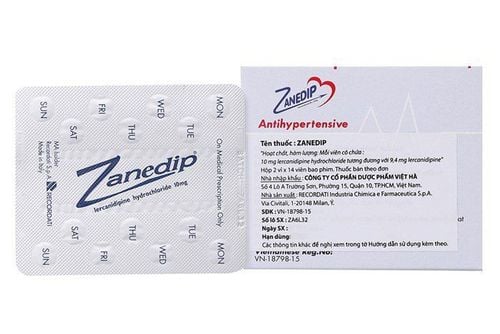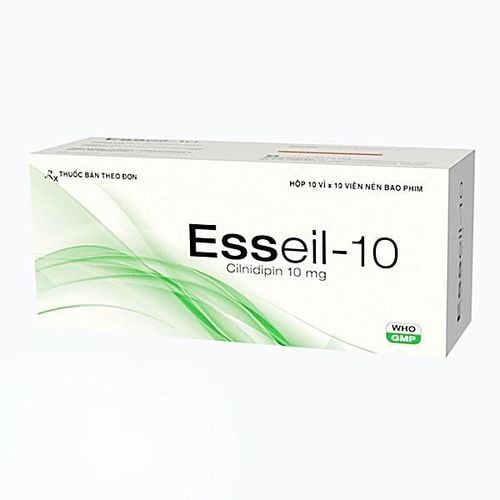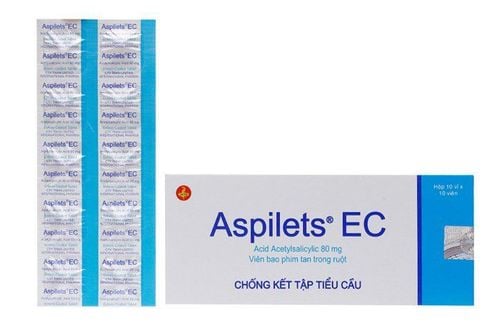This is an automatically translated article.
Vedicard 6.25 is a beta-blocker antihypertensive drug. The drug is favored not only for its antihypertensive effect but also for slowing the heart rate in patients with tachyarrhythmias. The following article will provide information on dosage, usage and important notes for patients during the use of Vedicard 6.25.
1. Uses of Vedicard 6.25
Vedicard 6.25 drug with the main ingredient is Carvedilol, a non-selective beta blocker and neurohormonal antagonist through many mechanisms. In addition, the drug also induces vasodilation by inhibiting alpha receptors as well as having antioxidant and anti-proliferative properties. Carvedilol's antihypertensive activity is exerted through two main mechanisms: selective alpha1 receptor blockade, vasodilatation, and decreased peripheral vascular resistance. In addition, carvedilol's mild calcium channel blocker effect also plays a role in lowering blood pressure.
2. Indications and contraindications of Vedicard 6.25
Vedicard 6.25 is indicated for the treatment of:
Essential hypertension; Angina pain ; Congestive heart failure. Vedicard 6.25 is not used in the following cases:
Patients with grade IV heart failure; People with asthma, chronic obstructive pulmonary disease with bronchospasm; Heart rate less than 50 beats/min or 2nd or 3rd degree atrioventricular block, sinus node insufficiency syndrome; Cardiac shock ; Systolic blood pressure less than 85 mmHg; Hypersensitivity to Carvedilol or any of its ingredients; Pregnant; People who are breastfeeding.
3. Dosage and how to use Vedicard 6.25
Usage: Vedicard 6.25 medicine is used orally. Patients should take the entire Vedicard 6.25mg tablet, do not chew, break, or crush it because it can reduce the effectiveness of the drug. It can be taken at any time of the day, but is usually taken at the same time each day to prevent forgetting.
Dosage:
People with essential hypertension:
Starting dose: 12.5mg/time x 1 time/day. Then it can be increased to 25mg x 1 time/day, but must be after at least 2 weeks of treatment. The maximum dose is 50mg/time x 1 time/day or 25mg/time x 2 times/day. Angina pectoris:
Starting dose: 12.5mg/time x 2 times/day. Increase to 25 mg twice daily after 2 weeks if necessary. The maximum dose is 100mg/day (in 2 divided doses). Congestive heart failure:
Initial dose: 3.125 mg x 2 times / day for the first 2 weeks. After at least 2 weeks, the dose may be gradually increased to 6.25 mg twice daily, followed by 12.5 mg twice daily, then to 25 mg twice daily. Maximum dose: 25 mg twice daily in patients < 85 kg and 50 mg twice daily in patients over 85 kg.
4. Side effects of Vedicard 6.25
Patients may experience some unwanted side effects while using Vedicard 6.25 such as:
Immune system disorders: Angioedema; Hematology: Decreased platelets, white blood cells; Metabolic: Hyperglycemia, weight gain and changes in AST, ALT; Nervous system disorders: Dizziness, fatigue, headache, dizziness, insomnia and paresthesias; Cardiovascular disorders: bradycardia, orthostatic hypotension, syncope, heart failure, atrioventricular block, peripheral circulatory disturbances and increased symptoms of angina; Gastrointestinal disorders: Anorexia, nausea, vomiting, diarrhea or constipation. If you experience unusual symptoms while being treated with Vedicard 6.25, the patient should immediately notify a doctor, nurse or go to a medical facility for treatment.
5. Vedicard drug interactions 6.25
Vedicard 6.25 may interact if used concurrently with the following drugs and substances:
Other antihypertensive drugs such as vasodilators, calcium channel blockers, receptor blockers, ACE inhibitors: increase the antihypertensive effect. Diltiazem, Verapamil or class I antiarrhythmic drugs. Digoxin: Increased blood levels of Digoxin. Clonidine. Insulin or oral hypoglycemic agents: Reduces the effect of drugs that increase blood glucose levels.
6. Be careful when using Vedicard 6.25 with subjects
Patients with congestive heart failure being treated with Digitalis. In patients with diabetes, regular blood glucose testing is required during treatment. People with kidney failure, COPD. Contact lens wearers because Vedicard can increase intraocular pressure. People with a history of or are suffering from psoriasis, pheochromocytoma or Prinzmetal's chest pain. Vedicard 6.25 may cause orthostatic hypotension or syncope in some patients, especially in those after drinking alcohol. Vedicard 6.25 may affect drivers and use machines because dizziness, blurred vision may occur. Vedicard 6.25 should not be used by pregnant women and nursing mothers because of the risk of harmful effects on the fetus and newborn.
7. Treatment of overdose Vedicard 6.25
Symptoms of Vedicard 6.25 overdose include:
Cardiac disorders: hypotension, bradycardia, atrioventricular block, intraventricular conduction disturbances and cardiogenic shock. Central nervous system toxicity: Convulsions, coma and respiratory arrest Bronchospasm. Lower blood glucose. Hyperkalemia. Treatment:
When using Vedicard 6.25 overdose, the patient should stop the drug immediately and notify the doctor or go to a medical facility for timely treatment. Patients were treated for neurological symptoms, hypotension, hypoglycemia and hyperkalemia. Use atropin iso-proterenol or a pacemaker for bradycardia and glucagon if hypoglycemia is present. Adrenalin or noradrenaline is preferred if peripheral vasodilation is predominant and circulatory status is continuously monitored during management. Above is all information about Vedicard 6.25 drug uses, dosage and important notes when using. To use Vedicard 6.25 safely and effectively, patients need to carefully read the instructions for use, strictly follow the indications and instructions of the doctor.













